This article was medically reviewed by Luba Lee, FNP-BC, MS. Luba Lee, FNP-BC is a Board-Certified Family Nurse Practitioner (FNP) and educator in Tennessee with over a decade of clinical experience. Luba has certifications in Pediatric Advanced Life Support (PALS), Emergency Medicine, Advanced Cardiac Life Support (ACLS), Team Building, and Critical Care Nursing. She received her Master of Science in Nursing (MSN) from the University of Tennessee in 2006.
There are 11 references cited in this article, which can be found at the bottom of the page.
This article has been viewed 60,703 times.
Knee bruises can occur because of a fall, a sports injury, a car accident, or even something as simple as hitting your knee against the edge of a table. Knee bruises can be subcutaneous (under the skin), intramuscular (within the muscle), or periosteal (in the bone), all of which can cause pain and swelling around the bruised area. All three types of bruises are treated the same way, but bone bruises will take much longer to heal (several months) than a subcutaneous bruise (about 2 weeks).[1] After sustaining a bruise, remember the acronym RICE—rest, ice, compress, and elevate your knee.[2]
Steps
Relieving Pain and Swelling in Your Knee
-
1Rest immediately after hurting your knee to prevent further injury. While bruising may not appear directly after injuring your knee, you can help prevent a more severe bruise, additional swelling, and pain by resting right away. Not only should you rest right away after the injury, but you should continue to rest your knee (and leg) until the bruise and injury are healed.[3]
- Resting won’t just help with the look of the bruise, swelling, and pain, but continuing to use your knee after it’s hurt may cause even more damage to your knee. This, in turn, may mean an even longer recovery time.
-
2Elevate your knee above your heart to prevent swelling. Once you’re off your feet, lie down and prop your injured leg up on a pillow or cushion. This will help control the swelling to your knee and could also make the bruise look less severe.[4]
- Lying on a couch with your injured leg propped up on the arm of the couch is a great method to use to elevate your knee.
Advertisement -
3Put ice on your knee for 15 minutes each hour. Ice is the best option for preventing or reducing swelling and will help a bruise heal faster. Don’t put the ice directly onto the skin of your knee, instead, wrap it in a towel first. Keep the ice on your knee for 15 minutes, once an hour, until the swelling is reduced or the pain has subsided.[5]
- Ice packs or other frozen items (such as a bag of peas or corn) can work as well. Just be sure to wrap them in a towel before putting them on your knee.
- You may want to continue to use ice for a couple of days after your bruise becomes visible.[6]
-
4Clean and treat your wounds. Bruises don’t usually result in external bleeding, but some knee injuries, such as falling on a rough surface (like gravel), may also cause cuts and scrapes to your knee. In addition to treating the bruise (and associated pain), you may also need to clean and treat the cuts and scrapes on your knee.[7]
- Clean the cuts or scrapes on your knee with warm water and soap. Dry the area by blotting it with a clean towel. And then put on a bandage, if needed.
-
5Wrap a compression bandage around your knee to reduce the amount of swelling. To help prevent excessive swelling to your knee, you can wrap your knee with a compression bandage. You don’t want to wrap your knee too tightly as to cut off blood flow or make your lower leg or foot go numb. Just apply the bandage enough to keep your knee stable and apply a comfortable amount of pressure.[8]
- Compression bandages can be found in a typical first aid kit. You can also purchase compression or elastic bandages at your local drug store or pharmacy.
-
6Take medication to relieve pain, as needed. Most knee injuries and their associated bruises are going to hurt, some more than others. If the pain becomes uncomfortable, you may want to take some pain medications to help reduce the pain. Follow the instructions on the bottle to determine how much and how often to take the medication.[9]
- Acetaminophen, or Tylenol, can be used for pain and ibuprofen, or Advil, can be used to reduce swelling.[10]
- If the pain persists or becomes unbearable, you should make an appointment with your doctor or go to the emergency room to have your knee x-rayed and evaluated.
Resting and Rehabilitating Your Knee
-
1Allow your bruised knee to fully heal before resuming regular activities. A bruised knee affects more than just your skin. Your whole knee may be sore or painful while the injury and bruise are healing. Take care not to use or walk on your injured leg more than absolutely necessary while it heals.[11]
- While your knee heals, avoid activities like running or playing sports.
- If an activity causes your knee to feel painful, it’s a good sign that you should stop doing that activity until you can do so without pain.
-
2Ask your doctor if you need a knee brace or crutches. If your knee injury resulted in a bruised bone, you may also require a knee brace or crutches to help protect your knee while it heals. If your bruise is taking longer than 2 weeks to heal, or if you’ve experienced similar injuries previously, make an appointment and ask your doctor if your injury is severe enough to require a brace or crutches.[12]
- If you need to use crutches, it means your doctor doesn’t want you to use your knee or leg at all for a certain period of time.
- Use the brace or crutches based on instructions of your doctor.
-
3Stretch your knee (and leg) before use to prevent further injuries. Stretching both your leg and your knee will help loosen up the muscles and tendons, which, in turn, will help prevent further injury to your knee. Stretching will also help improve the flexibility and range of motion in your knee that may have been lost while your knee was healing.[13]
- Squats, hamstring curls and stretches, calf raises and stretches, leg lifts, lunges, quadriceps stretches, and figure 4 stretches can all help stretch your knee before activity.
-
4Apply heat to your injured knee to help relieve pain. While your knee is healing, after the initial swelling has gone down, you may find it helpful to apply gentle heat to your knee on a regular basis. The heat will help reduce the pain in your knee and will allow you to regain some range of motion. Heat may be particular useful if you’ve used your knee that day and it’s sore.[14]
- Heat can be applied using a heating pad on a low setting or using a cloth or towel soaked in warm water.
- Use heat for only 15 to 20 minutes at a time.[15]
-
5Seek out the help of a physical therapist if recommended by your doctor. Depending on the severity of your knee injury and the advice of your doctor, you may want to consider seeking the help of a physical therapist to rehabilitate your knee. This would be especially important if you’re an athlete and play sports regularly.[16]
- There are a number of ways you can find a physical therapist in your area. You can ask your doctor for a referral/recommendation or you can do an internet search for physical therapists in your area. State/provincial and federal physical therapy associations often have lists of licensed physical therapists by area that can be searched online.
-
6Increase your activity gradually after a bruised knee. Regardless of what type of knee injury you sustained, you’ll want to take it slow when you start to perform regular activities again. Don’t rush back into intense physical activities or sports all at once. The last thing you want to do is re-injure your knee before it’s completely healed.[17]
- If you’re seeing a physical therapist, follow their instructions as to what activities to perform, for how long, and when.
Warnings
- If the area around the bruise looks infected, including red streaks running from the bruised area, if there is pus draining from the bruised area, or you have a fever, contact your doctor or go to your local emergency room.[19]⧼thumbs_response⧽
- If a hematoma forms on your knee, which is essentially a large swollen area filled with blood, do not attempt to drain the blood on your own. Contact your doctor for instructions on what to do next.[20]⧼thumbs_response⧽
Things You’ll Need
- Pillow or cushion
- Ice or ice pack wrapped in a towel
- Compression or elastic bandage
- Pain medication such as acetaminophen or ibuprofen
- Knee brace or crutches
- Heating pad
References
- ↑ https://medlineplus.gov/ency/article/007213.htm
- ↑ https://www.uofmhealth.org/health-library/tw4354spec
- ↑ https://www.uofmhealth.org/health-library/legin
- ↑ https://www.uofmhealth.org/health-library/legin
- ↑ https://www.uofmhealth.org/health-library/legin
- ↑ https://kidshealth.org/en/teens/bruises.html
- ↑ https://www.nhs.uk/common-health-questions/accidents-first-aid-and-treatments/how-do-i-clean-a-wound/
- ↑ https://orthoinfo.aaos.org/en/diseases--conditions/muscle-contusion-bruise/
- ↑ https://medlineplus.gov/ency/article/007213.htm
- ↑ https://my.clevelandclinic.org/health/drugs/11086-non-steroidal-anti-inflammatory-medicines-nsaids
- ↑ https://orthoinfo.aaos.org/en/diseases--conditions/muscle-contusion-bruise/
- ↑ https://familydoctor.org/knee-bracing-what-works/
- ↑ https://orthoinfo.aaos.org/en/staying-healthy/knee-exercises/
- ↑ https://orthoinfo.aaos.org/en/diseases--conditions/muscle-contusion-bruise/
- ↑ https://www.arthritis.org/living-with-arthritis/treatments/natural/other-therapies/heat-cold-pain-relief.php
- ↑ https://orthoinfo.aaos.org/en/staying-healthy/knee-exercises/
- ↑ https://orthoinfo.aaos.org/en/diseases--conditions/muscle-contusion-bruise/
- ↑ https://medlineplus.gov/ency/presentations/100207_3.htm
- ↑ https://medlineplus.gov/ency/article/007213.htm
- ↑ https://orthoinfo.aaos.org/en/diseases--conditions/muscle-contusion-bruise/
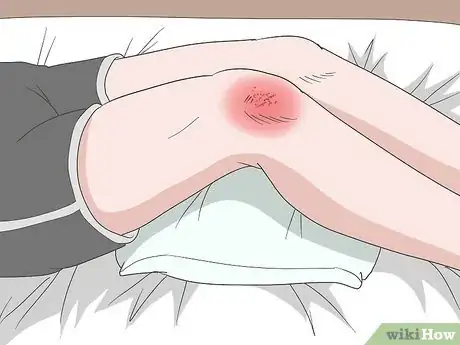
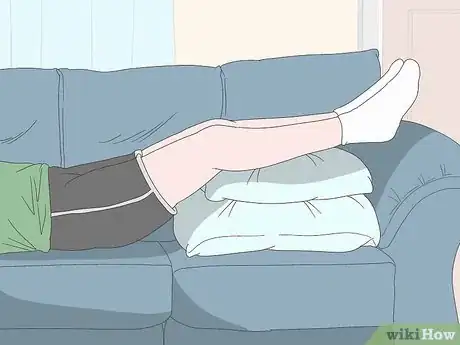
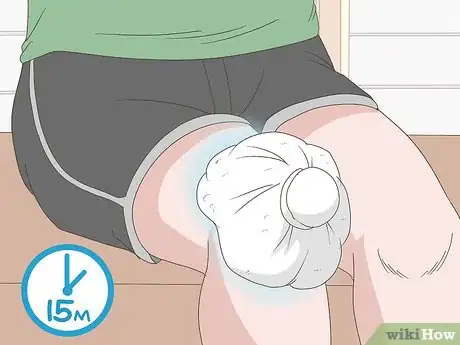
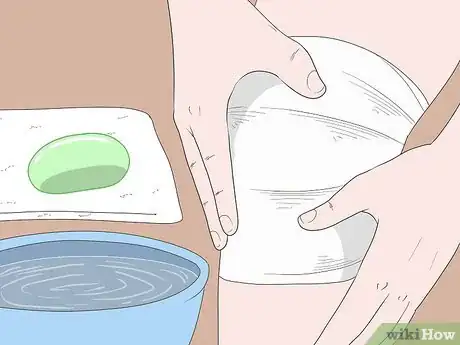
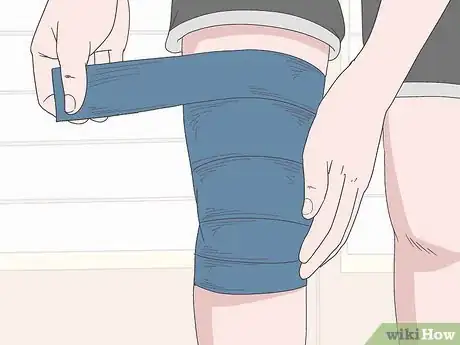
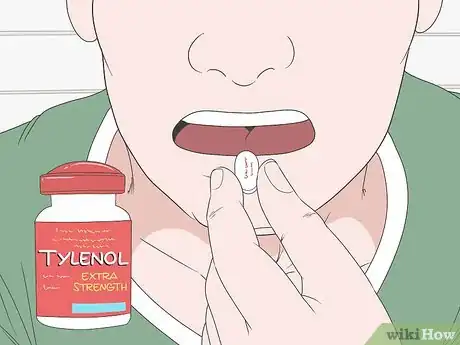
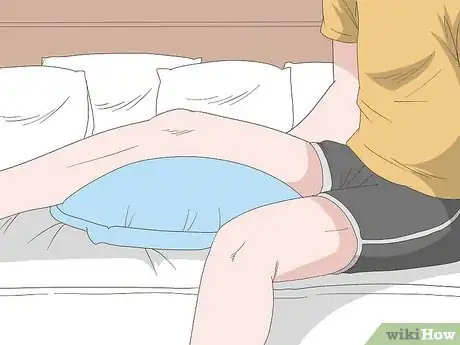

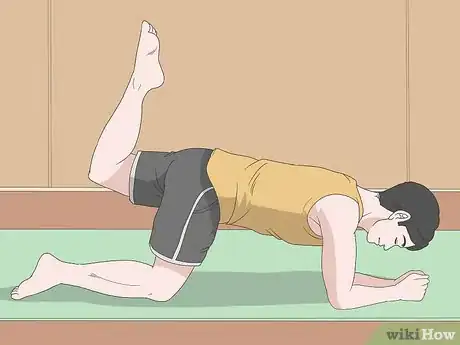
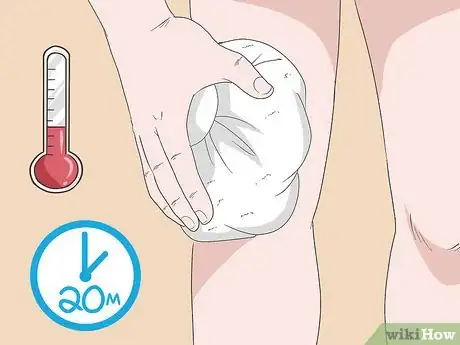

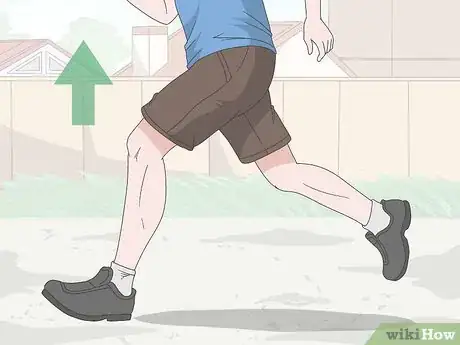

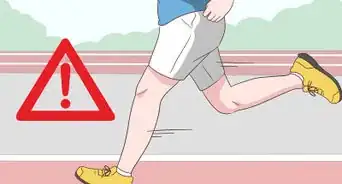
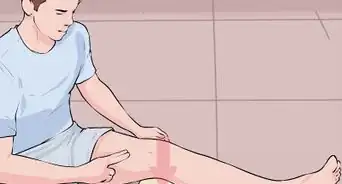



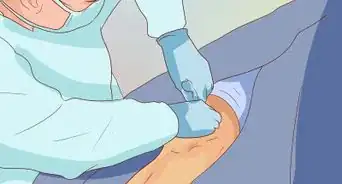
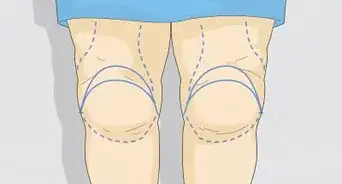


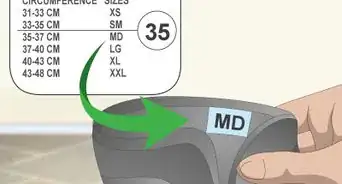
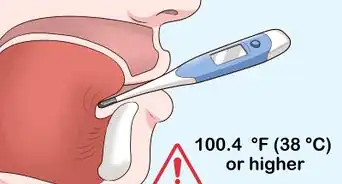











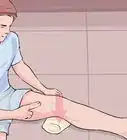




































Medical Disclaimer
The content of this article is not intended to be a substitute for professional medical advice, examination, diagnosis, or treatment. You should always contact your doctor or other qualified healthcare professional before starting, changing, or stopping any kind of health treatment.
Read More...